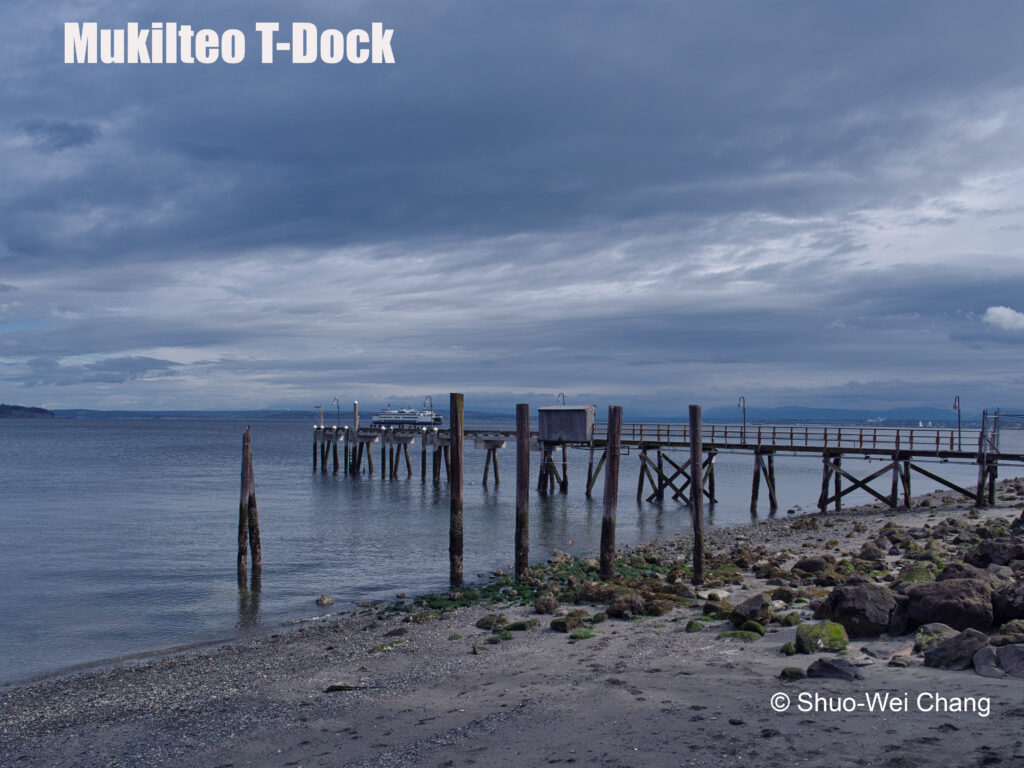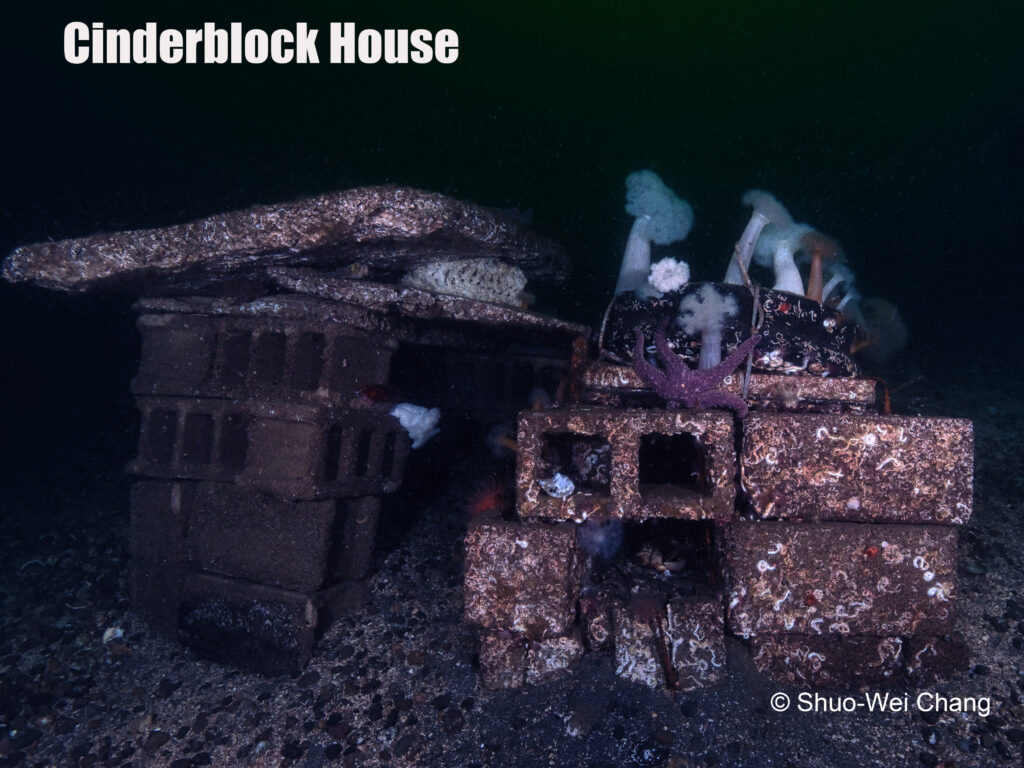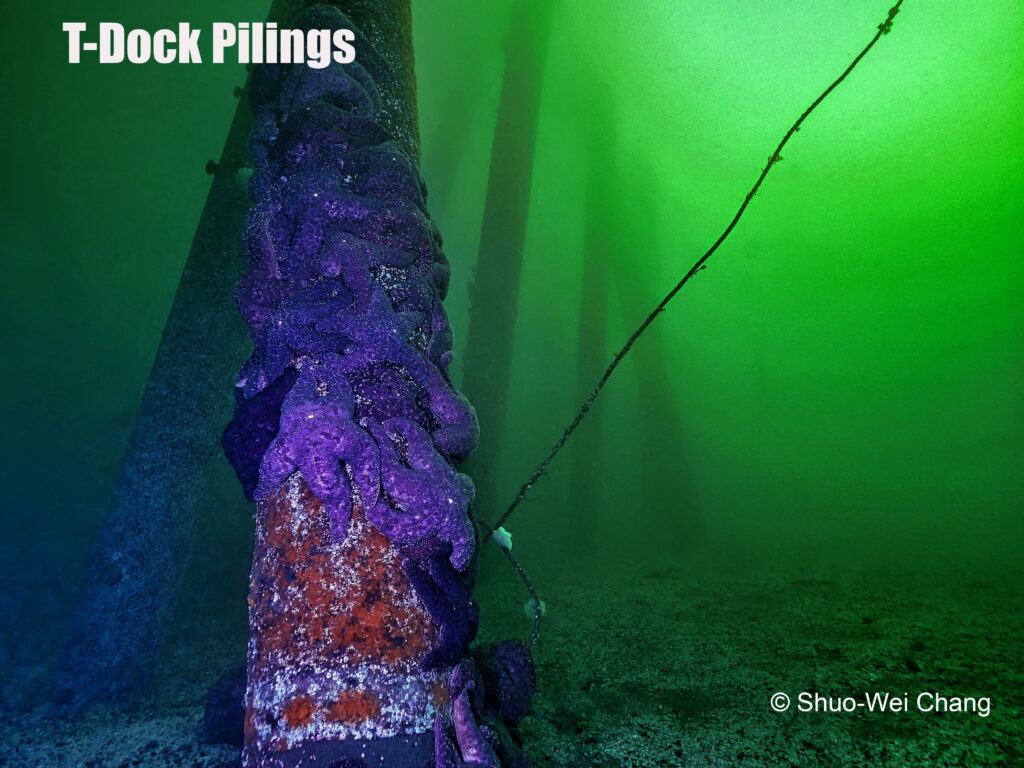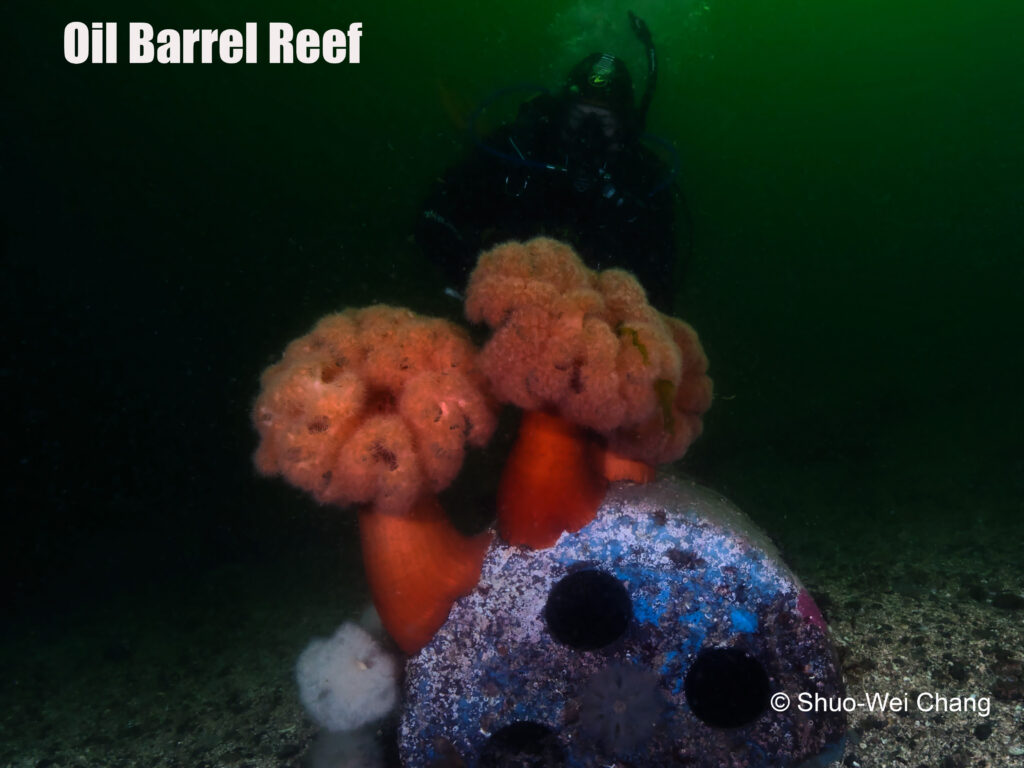MUKILTEO T-Dock
Site Description
Site Description: Mukilteo T-Dock is a human-made artificial reef. It’s featured structure is the Geodome, which is covered with hundreds of Plumose Anemones. Look closely between the anemones and you may find Shaggy Mouse
Nudibranchs. Hiding in the PVC pipes that create the Geodome, look for Wolf Eels, Pacific Red Octopus, and the occasional Decorated Warbonnet. In the center, concrete pipes and blocks lay home to more Plumose Anemones, Wolf
Eels, Quillback Rockfish, Copper Rockfish, Painted Anemones and every so often a Giant Pacific Octopus.
Entrance to the site is located to the right side of the Bulkhead, just east of the Silver Cloud Inn. A sandy flat bottom at entrance begins to gently slope off and turns over to pebbles and silt. Fresh water from the Snohomish River and storm water runoff can limit visibility and affect current on the top layer, sometimes creating night diving conditions even at depth. A rock ridge running off shore from the leaning pilings leads divers toward the Geodome. On the way back to shore, this ridge can also be a nice spot to look for critters tucked away during a diver’s safety stop.
Marine Life
Marine Life: Watching the bottom closely while moving from reef to reef divers may come across Pacific Red Octopus. Hidden in the pvc pipes and
logs, Wolf Eels are generally seen. Observe them long enough and they may even come out of their dwelling to say “Hello!” Visit the Cinderblock House
and you may see Lingcod, Wolf Eels, and even a Giant Pacific Octopus or Pacific Red Octopus. California Sea Cucumbers mosey along the sea floor joined by Rock Sole, C-O Sole, Dungeness Crab, and Red Rock Crab. One of the more intriguing critters in the Salish Sea, the Spotted Ratfish, can be seen cruising just above the bottom, usually, over by the T-Dock at night. The Oil Barrel Reef is home to Black Eyed Gobys, Coonstripe Shrimp, Decorator Crab, Gunnels, Slender Cockscombs, Plumose Anemones, and Painted
Anemones. For the Nudibranch lovers, check out the Concrete Block, Tire Reef, Training Line, and Geodome. The Training Line can be an interesting
spot to look for Gunnels and Decorator Crab, as well. Painted Greenlings, Lingcod, Copper Rockfish, Quillback Rockfish, Sand Lances, and Shiner Perch
are commonly seen throughout the dive site. At night, look for Harbor Seals, Spotted Ratfish, Sailfin Sculpin, Spot Prawns, and Northern Spearnose
Poachers. In the Spring, Comb Jellies begin to move in. Diver’s that shine their lights on them will be treated to quite an amazing display of color as
the light reflects off their cilia. As summer approaches, Lion’s Mane and Egg Yolk Jellies are present. Toward the end of summer, the bioluminescence show can become quite magical.
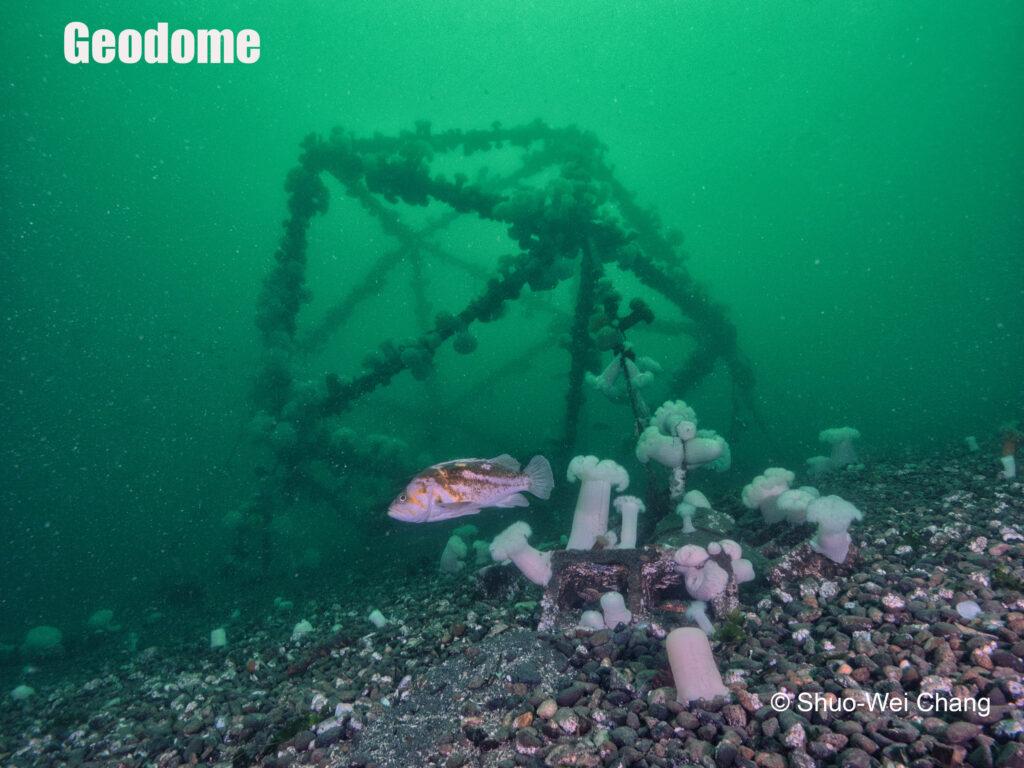
Dive Site Map
Mukilteo T-Dock
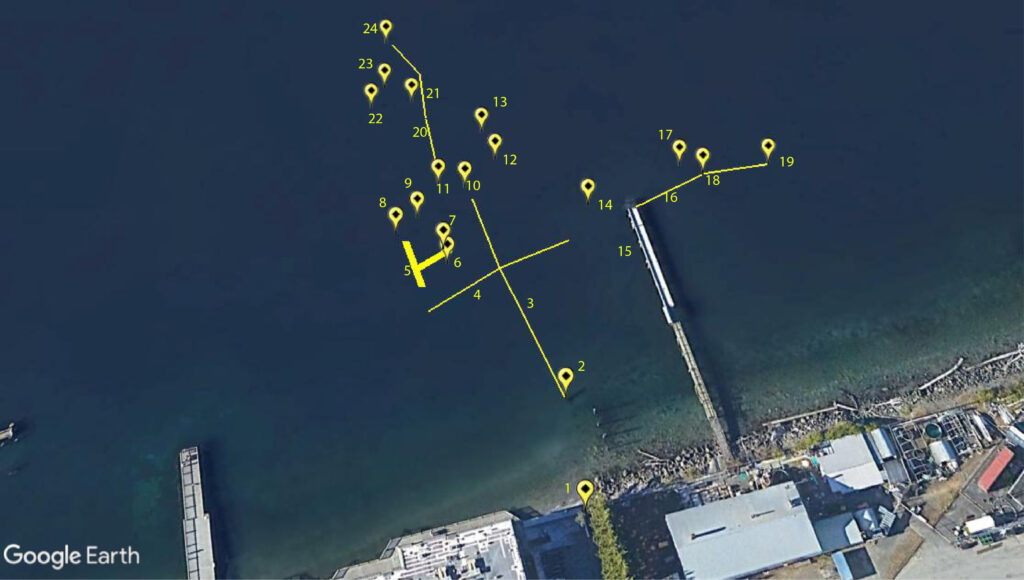
1.Entrance
2. Leaning Pilings
3. Rock Ridge
4. Training Line
5. Logs – Intersect
6. Cement Block
7. Debris Pile
8. Road Closed Sign
9. Tire Reef
10. Geodome
11. Limited Sight Sign
12. PVC Pile
13. Cinderblock House
14. Oil Barrel Reef
15. T-Dock
16. East Line
17. Debris Field
18. Rock Reef
19. Semi-Sunken Forest
20. Deep Line
21. Boat
22. Satellite Dish
23. Mukilteo Man
24. Deep Boat
Photo Gallery
